Male Breast Augmentation in New York City
Search and Compare the Best Clinics and Doctors at the Lowest Prices for Male Breast Augmentation in New York City
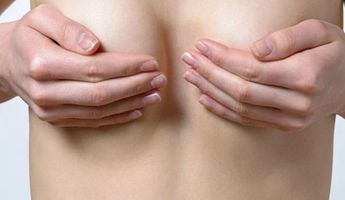
Find the best clinics for Male Breast Augmentation in New York City
With Medijump you can browse 3 facilities offering Male Breast Augmentation procedures in New York City. The cheapest price available is $3,000 in Los Angeles. And for the cheapest price globally, prices start from $2 in Turkey.
Male Breast Augmentation in United States
Price: $ 3,000
Male Breast Augmentation in Los Angeles
Price: $ 3,000
Turkey offers the best prices Worldwide
Price: $ 2
From 137 verified reviews
Aline Corrales, 19 September 2020
Best experience ever! Dr. Kevin and his team made this journey very smooth for me. I love my results and how fast I’m healing. I would absolutely recommend him !!!
RR Plastix NY Plastic Surgery Center, can be found in Brooklyn, New York City, United States and offers its patients Male Breast Augmentation procedures as well as 31 other procedures, across 2 different procedure categories. At present, there is no pricing information for Male Breast Augmentation procedures at RR Plastix NY Plastic Surgery Center. The pricing information is quite specialised, so it's only available on request, and the average price is around $3,000. The lead specialist at the Clinic will be carrying out all the treatments, and RR Plastix NY Plastic Surgery Center is accredited by just one known accreditations institute, The American Society for Aesthetic Plastic Surgery
New York Center for Facial Plastic & Laser Surgery, can be found in Manhattan, New York City, United States and offers its patients Male Breast Augmentation procedures as well as 39 other procedures, across 4 different procedure categories. At present, there is no pricing information for Male Breast Augmentation procedures at New York Center for Facial Plastic & Laser Surgery. The pricing information is quite specialised, so it's only available on request, and the average price is around $3,000. The lead specialist at the Clinic will be carrying out all the treatments, and New York Center for Facial Plastic & Laser Surgery is not accredited by any recognised accreditations institutions.
- Home
- United States
- New York City
Compare Before & After Photos of _procedure_photos.phpMale Breast Augmentation
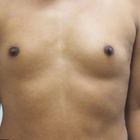
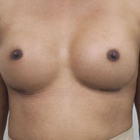
Front view
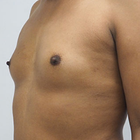
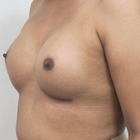
Front view


Front view
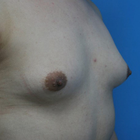
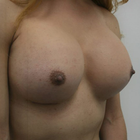
Half-side view
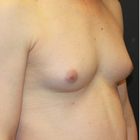
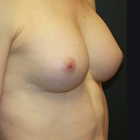
Half-side view
WHY US?
At Medijump, we're making medical easy. You can search, compare, discuss, and book your medical all in one place. We open the door to the best medical providers worldwide, saving you time and energy along the way, and it's all for FREE, no hidden fees, and no price markups guaranteed. So what are you waiting for?

Free

Best Price

Widest Selection

Risk-Free
What you need to know about Male Breast Augmentation in New York City
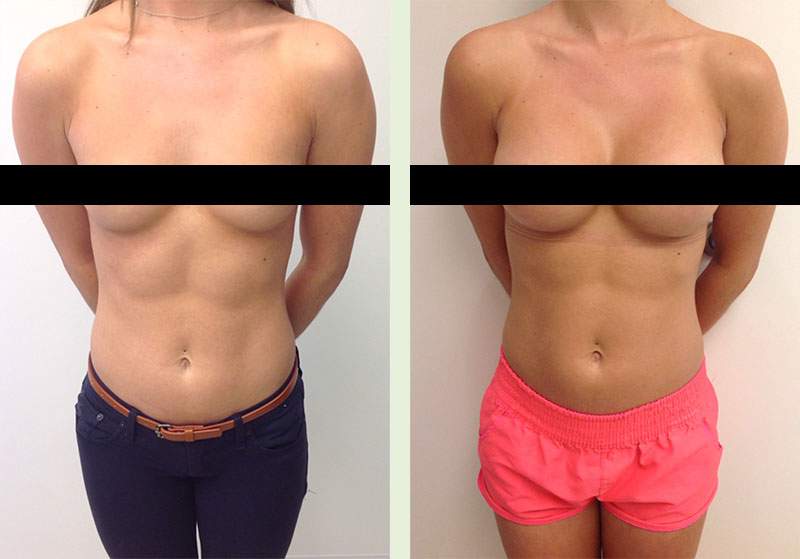
Male breast augmentation is a cosmetic procedure to enlarge the male’s breasts by inserting a breast implant. It is usually done on a male to female surgery to give patients contoured feminine breasts.
The procedure is also done to enhance the pectoral muscles on men whose chests do not seem to respond to exercise or men with Poland’s syndrome. The intervention is often preferred by individuals who wish for a chest that looks more chiseled and symbolizes masculinity. The usual method entails placing implants beneath the pectoral muscles.
What is the cost of Male Breast Augmentation in New York City?
The expense associated with Male Breast Augmentation within New York City fluctuates based on several variables such as the surgeon's level of skill, the intricacy of the operation, the kind of implants employed, and the physical location of the clinic. Therefore, it’s essential to converse in-depth with your medical provider to comprehensively comprehend the total expenditure related to the procedure.
Insurance plans generally don't cover Male Breast Augmentation; however, some medical facilities provide patient-friendly finance choices. It's vital to assess the pros and cons in correlation with your personal financial health strategies and determine how it aligns with your budget. Investing in your self-perception and physical appearance can potentially provide invaluable long-term benefits.
What Does the Procedure Involve?
Male breast augmentation is carried out under general anesthetic. Your surgeon starts by making an incision in an inconspicuous area, usually under the breast along the natural skin fold, to make sure the scar is unnoticeable. Then, they place the implant either under the chest muscles or behind the breast tissue. The implants can be made from silicone gel or saline, and the size is adjusted based on your preferences.
How Long Should I Stay in New York City for a Male Breast Augmentation Procedure?
The length of your stay in New York City after a Male Breast Augmentation is subject to certain variables. Generally, individuals are cautioned to remain in the vicinity for around a week or two following the surgery. This time frame accommodates the preliminary healing stage and facilitates the management of any immediate complications post-procedure.
In this time, your doctor will keep track of your recuperation process via planned follow-up visits. These check-ups serve as a vehicle to monitor the healing process, extract stitches, and check for any signs of infection or inherited issues. Adherence to this schedule of revisits is of utmost importance.
However, it is crucial to remember that everyone's healing experience is individual. Aspects such as age, overall physical wellness, and the degree of observance to the instructions given after the procedure can sway your recovery. Some people might necessitate an extended stay in New York City, particularly if they encounter any complications or if their recovery pace is slower than anticipated. Therefore, it's imperative to have a conversation about this with your surgeon, who can furnish a more precise timeline based on your particular circumstance, promoting a secure and effective recuperation.
What's the Recovery Time for Male Breast Augmentation Procedures in New York City?
You may feel uncomfortable for the first few days and your doctor will give you pain medication to manage the discomfort, so you may need to rest as much as possible during this period. The recovery period until you can go back to your normal routine (including intense exercise) may take about 4 to 6 weeks, but you should be able to return to work within 1 or 2 weeks.
Following the operation, it's fairly common for patients to feel some discomfort, along with swelling and bruising. These are standard postoperative signs that will slowly fade with time. Medical practitioners commonly prescribe pharmaceutical drugs to manage pain and to reduce bruising during this timeframe. Regular doctor visits for postoperative reviews are suggested to keep track of the healing process and promptly deal with any arising complications.
Furthermore, it's advised to avoid demanding activities such as heavy weight lifting and intense exercises for a minimum of four to six weeks after the treatment. This precaution ensures optimal healing of the chest area and minimizes the probability of post-surgical complications. Always remember, healing requires time and patience. Although resuming daily activities is important, giving your body the required time to fully recuperate from the operation is equally crucial.
What sort of Aftercare is Required for Male Breast Augmentation Procedures in New York City?
It is important to follow your surgeon’s post-operative instruction to avoid any complications and to make sure that the wounds will heal properly. Your surgeon’s instruction may include restrictions, diet, exercise, and wound care. Since some implants need to be replaced after about 10 years, make sure you attend regular checkups with your local doctor.
Keeping regular check-ins with your medical professional is essential to keep track of your recovery journey, modify your post-treatment care if required, and tackle any arising issues swiftly. The post-treatment regimen also consists of particular instructions related to physical movement and workout. Mild physical exercise might be recommended for better blood flow, but demanding activity or chest-focused exercises are generally not permitted for a specific amount of time.
What's the Success Rate of Male Breast Augmentation Procedures in New York City?
In general, the success rate of male breast augmentation is similar to female breast augmentation, which is around 90% to 98%. This is notably high.
The advancements in medical surgery technology, coupled with the proficiency of the medical experts, generally result in a noticeable enhancement in the physical aesthetics and self-assurance of the majority of males who opt for this procedure. Furthermore, due to the refined chest shape and muscle outline achieved, patients have reported a significant level of satisfaction.
However, akin to other medical interventions, the effectiveness of a Male Breast Augmentation is largely influenced by personal variables. These could comprise the overall wellbeing of the patient, the way their body reacts to the surgery, the surgeon's skill, and compliance with guidelines for care post-surgery.
Are there Alternatives to Male Breast Augmentation Procedures in New York City?
Surely, other choices exist for Male Breast Augmentation techniques in New York City. One such approach entails embarking on natural chest enhancement. This involves a regimen of chest workouts and a nutritional program aimed at boosting the bulk and power of the pectoral muscles. Though this pathway may be more time-consuming, it could provide a gradual, naturally appearing augmentation in chest size without the price tag and potential hazards tied to surgery.
Hormonal therapies present another viable alternative, particularly for transgender men. These therapies seek to encourage the formation of male secondary sexual traits, such as an uptick in muscle mass, body hair, and a more profound voice. However, it's crucial to consult a medical practitioner before beginning these therapies due to the potential side effects.
Lastly, some men might select a non-surgical technique like the injection of fillers or fat transfer to enhance the contour and fullness of the chest. However, these procedures yield temporary outcomes and may necessitate repeat procedures. It is advisable to consult with your surgeon about these alternatives.
What Should You Expect Before and After the Procedure
Before undergoing the Male Breast Augmentation, your healthcare professional will assess your medical history, carry out physical assessments, and converse about your cosmetic objectives to evaluate if you're fit for the procedure. Various diagnostic examinations may be necessary to ascertain your general health condition. Your surgical specialist will provide information about the impending procedure, discuss anticipated risks, and outline the probable result. Those who smoke will receive advice to stop several weeks prior to the procedure as nicotine may obstruct the healing process. Additionally, you might be instructed to adhere to specific dietary guidelines and discontinue certain medications.
Soon after the Male Breast Augmentation, it's common to experience some discomfort, inflammation, and bruising in the chest region. This usually decreases steadily over time. Over-the-counter drugs can be used to alleviate the discomfort. Typically, the use of a supportive compression garment is suggested to reduce swelling and aid the new chest shape during the recovery phase.
What are the Potential Risks of Male Breast Augmentation?
Although most patients are happy with the outcome of the surgery, it is important to be well-informed about the side effects and risks before you decide to have it, which are:
- Bleeding and infection
- Seroma
- Hematoma
- Asymmetry and dissatisfaction
- Implant shifting or displacement
- Numbness of the upper arm
- Unfavorable scarring
- Allergic reaction to the anesthesia.
Whilst the information presented here has been accurately sourced and verified by a medical professional for its accuracy, it is still advised to consult with your doctor before pursuing a medical treatment at one of the listed medical providers
No Time?
Tell us what you're looking for and we'll reachout to the top clinics all at once
Enquire Now

Popular Procedures in New York City
Price on Request

Prices Start From $692

Prices Start From $556

Prices Start From $2,473

Recommended Medical Centers in New York City for Male Breast Augmentation

- Interpreter services
- Translation service
- Religious facilities
- Medical records transfer
- Medical travel insurance
- Health insurance coordination
- TV in the room
- Safe in the room
- Phone in the room
- Private rooms for patients available

- Interpreter services
- Translation service
- Religious facilities
- Medical records transfer
- Medical travel insurance
- Health insurance coordination
- TV in the room
- Safe in the room
- Phone in the room
- Private rooms for patients available

- Interpreter services
- Translation service
- Religious facilities
- Medical records transfer
- Medical travel insurance
- Health insurance coordination
- TV in the room
- Safe in the room
- Phone in the room
- Private rooms for patients available

- Interpreter services
- Translation service
- Religious facilities
- Medical records transfer
- Medical travel insurance
- Health insurance coordination
- TV in the room
- Safe in the room
- Phone in the room
- Private rooms for patients available

- Interpreter services
- Translation service
- Religious facilities
- Medical records transfer
- Medical travel insurance
- Health insurance coordination
- TV in the room
- Safe in the room
- Phone in the room
- Private rooms for patients available

- Interpreter services
- Translation service
- Religious facilities
- Medical records transfer
- Medical travel insurance
- Health insurance coordination
- TV in the room
- Safe in the room
- Phone in the room
- Private rooms for patients available

- Interpreter services
- Translation service
- Religious facilities
- Medical records transfer
- Medical travel insurance
- Health insurance coordination
- TV in the room
- Safe in the room
- Phone in the room
- Private rooms for patients available

- Interpreter services
- Translation service
- Religious facilities
- Medical records transfer
- Medical travel insurance
- Health insurance coordination
- TV in the room
- Safe in the room
- Phone in the room
- Private rooms for patients available

- Interpreter services
- Translation service
- Religious facilities
- Medical records transfer
- Medical travel insurance
- Health insurance coordination
- TV in the room
- Safe in the room
- Phone in the room
- Private rooms for patients available

- Interpreter services
- Translation service
- Religious facilities
- Medical records transfer
- Medical travel insurance
- Health insurance coordination
- TV in the room
- Safe in the room
- Phone in the room
- Private rooms for patients available
Male Breast Augmentation in and around New York City
About New York
New York City, or simply New York (NY), is the most populous city in the United States with an estimated population of over 8 million. The city is labeled as the cultural, financial, and media capital of the world. It is an important center of international diplomacy since it houses the headquarters of the United Nations. The city has been attracting tourists from all around the globe for its architectural beauty, dining spots, and arts. Fueled by its global popularity and superior healthcare, the city also welcomes patients from many other countries to undergo cosmetic surgeries and complex or rare procedures that are not available in the patient’s home country. The medical professionals are highly qualified, skilled, and experienced. The medical costs might not be the cheapest, but patients will get the best treatment in the world.
Popular Areas in New York
New York offers its visitors a myriad of attractions to see and things to do. Tourists can find world-famous sites in almost every corner. The following are the most popular places in the city.
- Statue of Liberty is a symbol of freedom and democracy. It was a gift from the French people to the people of the United States as a monument of international friendship during the American Revolution. This famous statue was designed by French sculptor Frédéric Auguste Bartholdi, and the metal framework was built by Gustave Eiffel. Tourists can access the pedestal and the crown. Although the climb to the top is strenuous, the view from Lady Liberty’s crown is breathtaking, making it one of the most rewarding experiences of your trip to NYC. To get to the statue, you need to take a ferry from Battery Park City or New Jersey. There is only one official ferry company that is allowed to take you to the islands, Statue Cruises.
- Staten Island Ferry offers a stunning landscape of New York City and the Statue of Liberty. The ferry runs frequently and is free. Tourists can enjoy the refreshing breeze while admiring Governors Island, the Brooklyn Bridge, lower Manhattan and Wall Street’s skyscrapers, Ellis Island, the Statue of Liberty, and the Verrazano-Narrows Bridge.
- Empire State Building is perhaps the most iconic symbol of New York City. This magnificent landmark should not be missed by any visitors. The building was opened during the Great Depression in 1931 and tourists can see its Art Deco style in the architecture. The view from its 86th and 102nd floors is spectacular, especially around sunset time.
- Central Park is 843 acres of open space and is a good place to escape from the concrete jungle of New York City. The park was designed by Frederick Law Olmsted and Calvert Vaux, and it was the first major landscaped public park in the United States. Tourists can wander around the park, enjoy a picnic, visit a memorial to John Lennon, or interact with animals in the Zoo.
Weather and Climate in New York
New York City has four seasons, each with its own perks, which makes the city a year-round destination.
- Spring starts in March and ends in April. The city enjoys a pleasant temperature during this season. It is one of the most beautiful times to visit since the city is filled with Cherry Blossoms and hosts a number of festivals. However, expect to experience seasonal storms.
- Summer is from June to August. The temperatures are mostly warm, with an average between 25 °C to 30 °C. The city is usually crowded and busy during this season, but tourists can enjoy several free summer concerts.
- Autumn is a great time to visit New York City, which lasts from September to November. The summer heat will be replaced with a cooler temperature, and the city is overflowing with red and orange leaves.
- Winter in the city can be freezing and sometimes snowy. The season starts in December and ends in February. The temperatures can drop as low as -25 °C. If you plan to visit during winter, make sure to dress properly.
Getting Around in New York
The primary international airport in New York City is the John F. Kennedy International Airport. More than ninety airlines operate from this airport, including several budget airlines such as JetBlue. Getting around the city is fairly easy and inexpensive, especially by public transportation. The city has 27 subway lines stopping at 472 stations and more than 5,000 buses. To ride the subway, you will need to purchase a MetroCard that cost $1. The fares are $2.75 per trip and you can buy a one week unlimited MetroCard for $33 or an unlimited monthly MetroCard for $127.
The bus will take you to many places including the east or west portions of Manhattan. The bus fares are $2.75 per trip and the buses only accept MetroCard or exact fare in coins. If you do not want the hassle to figure out the public transportation system, the iconic yellow taxis are widely available. You can flag them down directly from the streets. The taxis are green in Brooklyn and Uber and Lyft are also available.
Tourists Visas in New York
Citizens of Canada, Marshall Islands, Micronesia, Palau, and Bermuda are given visa exemption access. Holders of passports issued by 38 countries including Australia, Singapore, and the United Kingdom are selected for the Visa Waiver Program. Nationals from countries that are not listed in the visa exemption and visa waiver program need to apply for a visa. All visitors may stay for a maximum of 90 days. It is advisable to learn more about the visa policy at your nearest United States Embassy.
Additional Information
- Local Currency: US dollar ($) is the official currency. Please check XE.com for the current exchange rate to your local currency.
- Money & Payments: ATMs can be found everywhere, and credit cards are accepted at most hotels, restaurants, and shops. Tipping is not optional. For restaurant servers and bartenders, 15% - 20% of the bill is acceptable.
- Local Language: The main language in New York City is English. However, there are over 800 languages spoken in the city, such as Spanish and Chinese.
- Local Culture and Religion: Christianity is the major religion in New York City, followed by Judaism, Islam, Buddha, and Hindu.
- Public Holidays: New York City celebrates various holidays, including New Year, Martin Luther King Jr Day, Independence Day, Thanksgiving Day, and Christmas Day.
Popular Searches
- Plastic Surgery in Thailand
- Dental Implants in Thailand
- Hair Transplant in Thailand
- Breast Augmentation Thailand
- Gastric Sleeve in Thailand
- Gender Reassignment Surgery in Thailand
- Laser Hair Removal in Bangkok
- Botox in Bangkok
- Dermatology in Bangkok
- Breast Augmentation in Bangkok
- Coolsculpting in Bangkok
- Veneers in Turkey
- Hair Transplant in Turkey
- Rhinoplasty in Turkey
- Stem Cell Therapy in Mexico
- Rhinoplasty in Mexico
- Liposuction in Mexico
- Coolsculpting in Tijuana
- Rhinoplasty in Korea
- Scar Removal in Korea
- Gastric Sleeve in Turkey
- Bone Marrow Transplant in India
- Invisalign in Malaysia
- Plastic Surgery in the Dominican Republic
- Tummy Tuck in the Dominican Republic
- Plastic and Cosmetic Surgery in Poland
- Rhinoplasty in Poland
- Hair Implant in Poland
- Dental Implants in Poland
- IVF in Turkey


